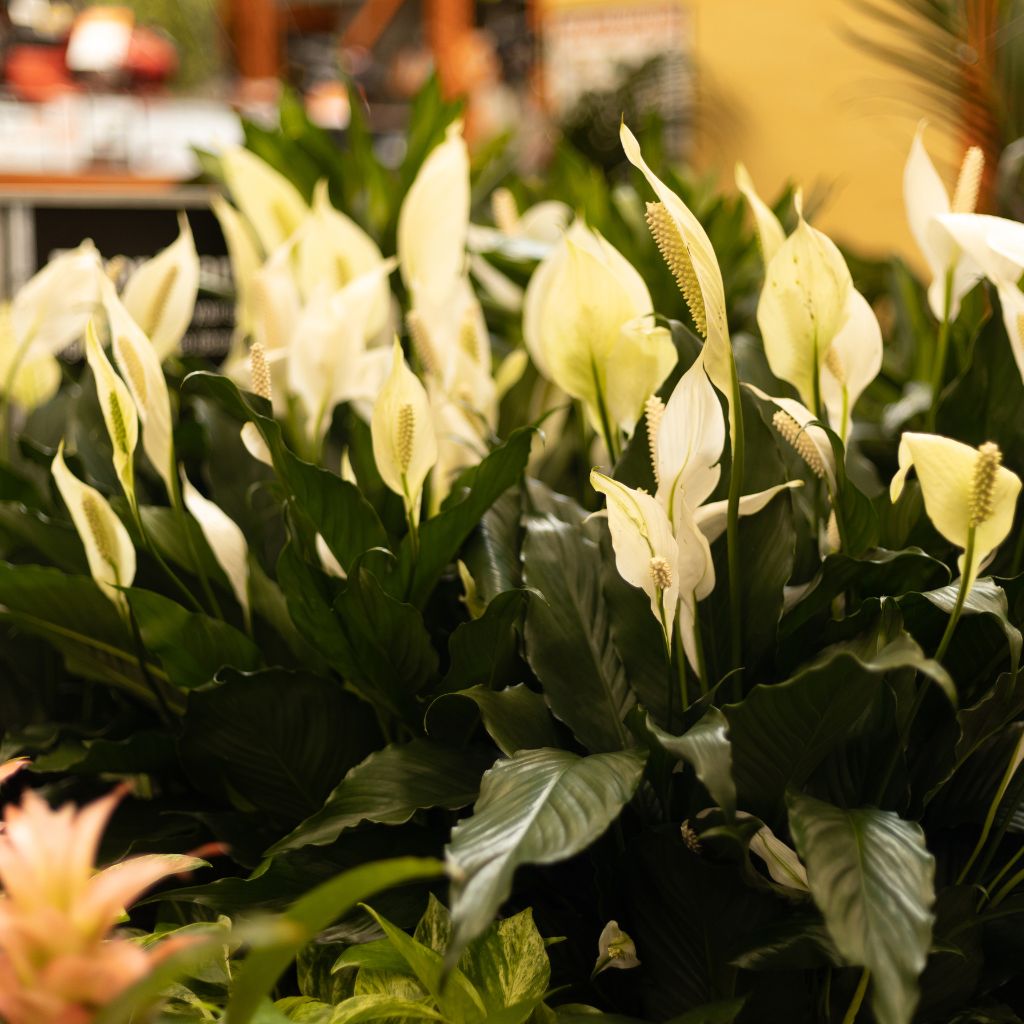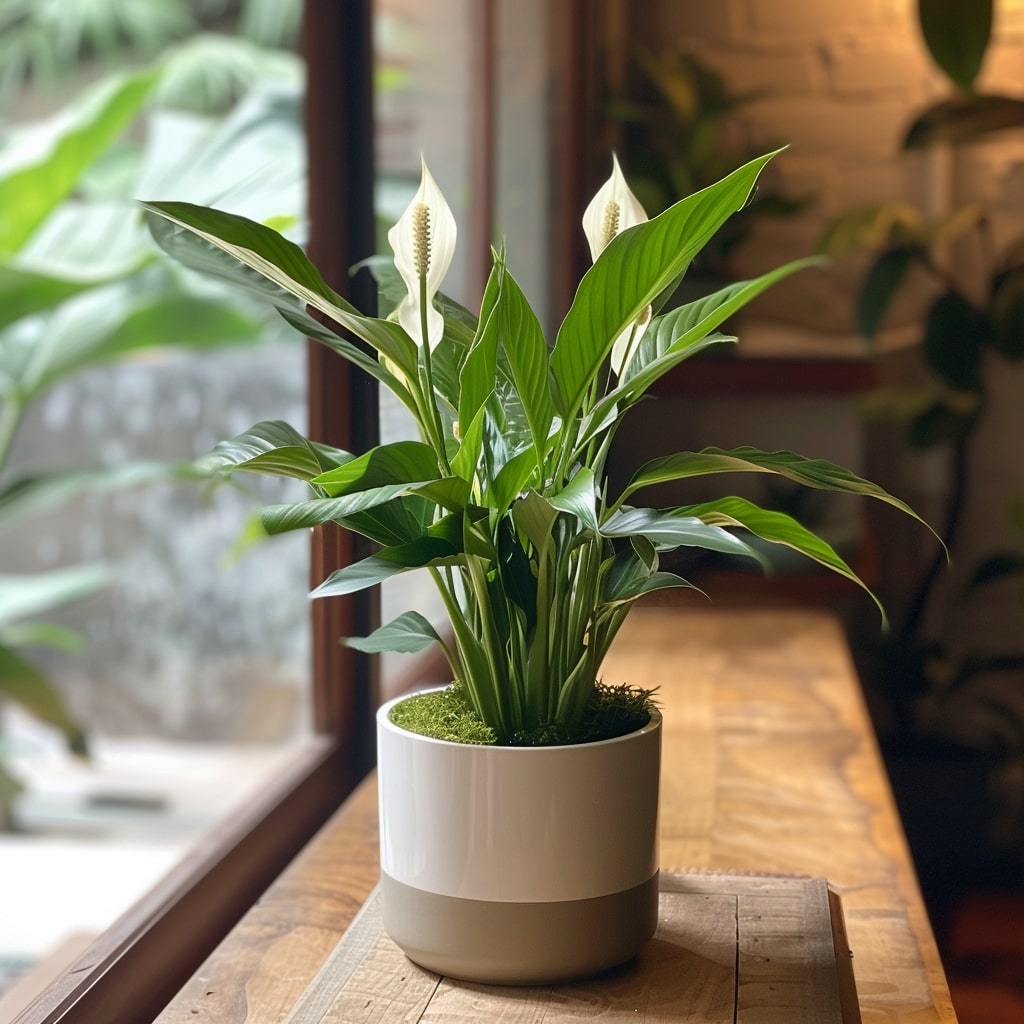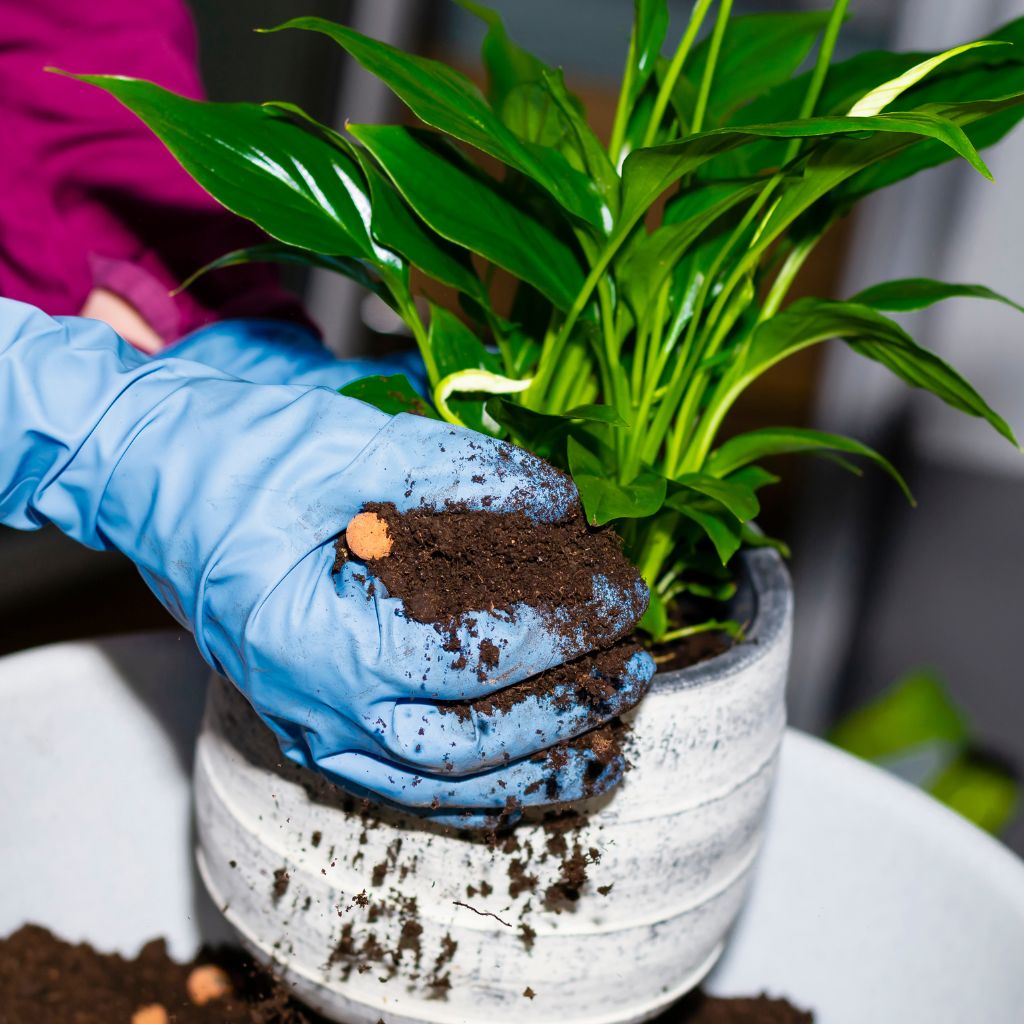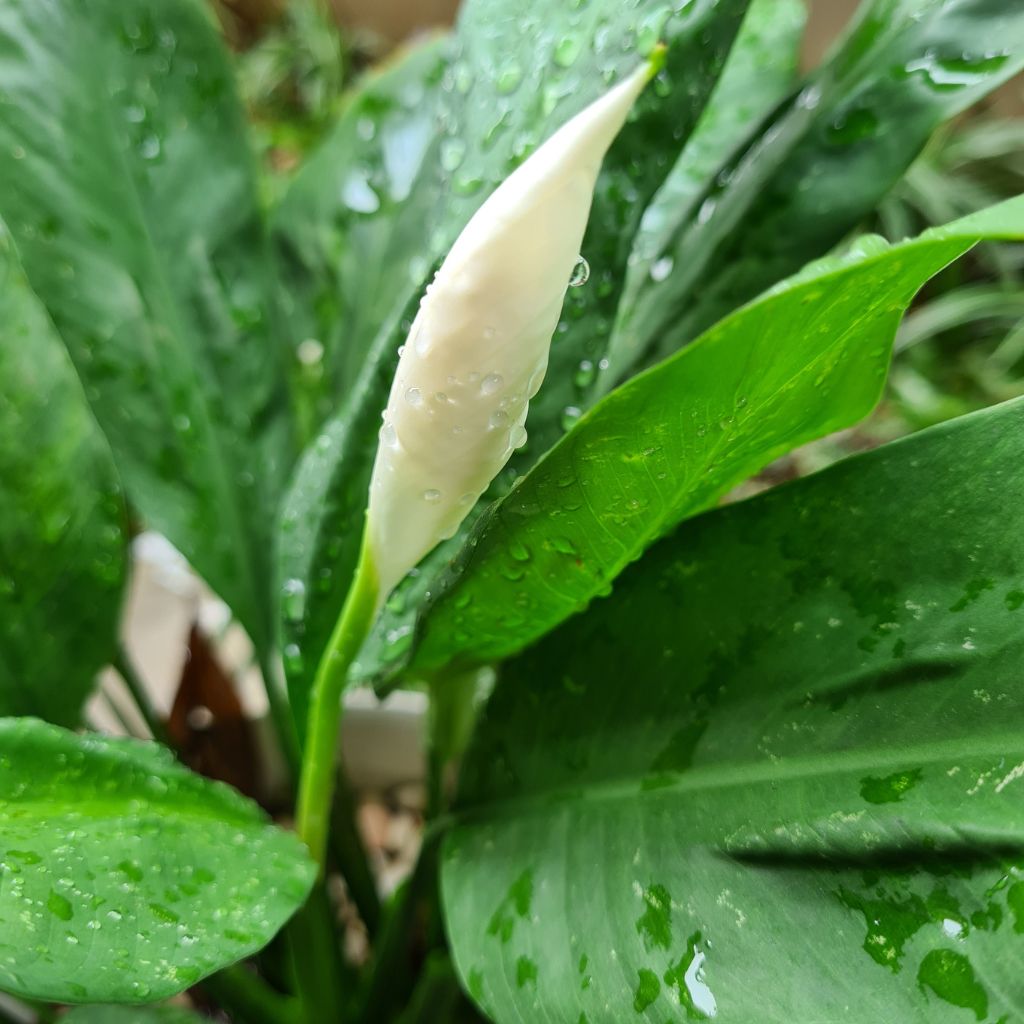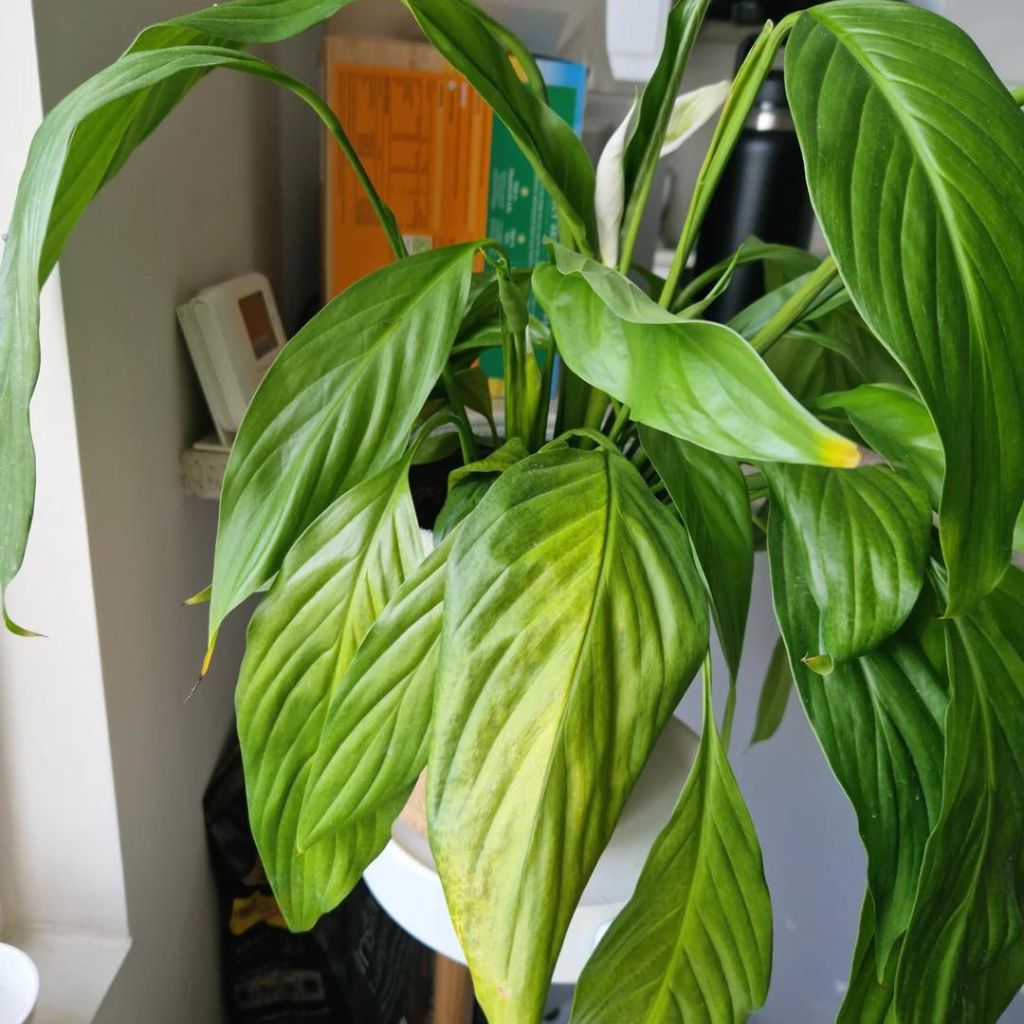Is your Peace Lily playing hide-and-seek with its blooms? You’re not alone in this floral mystery! Renowned for their glossy green leaves and stunning white flowers, Peace Lilies can be elusive when it comes to consistent blooming.
But don’t worry, there’s a way to keep these beauties blossoming all year long. Imagine your indoor space adorned with the continuous elegance of your Peace Lily’s vibrant blooms. Ready to uncover the secrets? Here are the expert tips you need to transform your Peace Lily into a perpetual bloomer.
Understanding Peace Lily Bloom Cycles
To successfully encourage your Peace Lily to bloom, it’s essential to understand its natural growth and blooming patterns.
Natural Blooming Season
Peace Lilies typically bloom in spring, with optimal conditions prompting the production of their signature white blooms. They thrive in indoor environments with steady temperatures between 65 and 86 degrees Fahrenheit (18-30 degrees Celsius). Warmer conditions are more conducive to blooming.
Growth Stages
The Peace Lily’s blooming cycle consists of four stages: budding, blooming, seed production, and senescence. During the budding phase, small buds emerge, blossoming into elegant white spathes. After pollination, the plant may produce seeds, followed by the natural fading and death of the flower. Reducing stress and providing consistent care help sustain and increase the frequency of flowering.
Optimal Growing Conditions for Blooming
Creating the perfect environment for your Peace Lily involves ensuring optimal lighting, watering, temperature, and humidity.
Appropriate Lighting
Peace Lilies require bright, indirect sunlight to bloom. Direct sunlight can scorch their leaves, while too little light can prevent flowering. Place your Peace Lily in a spot where it receives filtered light, such as near a north-facing window or behind a sheer curtain. If natural light is insufficient, consider using artificial lighting, such as fluorescent or LED grow lights, positioned about 12-18 inches above the plant.
Proper Watering Techniques
Peace Lilies love consistent moisture but can suffer from root rot if overwatered. Water your plant when the top inch of soil feels dry. Use lukewarm water and ensure it drains well to prevent water from sitting at the bottom of the pot. During the growing season, keep the soil moderately moist and reduce watering in winter.
Ideal Temperature and Humidity
Peace Lilies thrive in temperatures between 65 and 86 degrees Fahrenheit (18-30 degrees Celsius). Maintaining indoor humidity above 50% supports healthy growth and flowering. Use a humidifier or place your plant on a tray of wet pebbles to increase humidity.
Fertilization and Soil Requirements
Proper fertilization and soil environment are crucial for encouraging your Peace Lily to bloom.
Choosing the Right Fertilizer
Use a balanced, water-soluble fertilizer with equal parts of nitrogen, phosphorus, and potassium (NPK), such as a 10-10-10 formula. During the growing season, apply this fertilizer every six weeks. Too much nitrogen can suppress blooming, so follow the application instructions carefully.
Soil Composition and pH
Peace Lilies prefer soil rich in organic matter and well-draining to prevent root rot. A good potting mix includes ingredients like perlite, pine bark, and peat moss. The ideal pH for your Peace Lily is slightly acidic to neutral, around 5.8 to 6.5. Regularly check soil moisture to keep it consistently moist but not soggy.
Practical Care Tips
Consistent care is essential for fostering lush blooms in Peace Lilies. Here are some practical care tips for optimal flowering.
Watering Practices for Optimal Blooming
Water your Peace Lily when the top inch of soil feels dry. Use lukewarm water to avoid shocking the roots, and water until it begins to drain from the bottom. Avoid overwatering to prevent root rot.
Fertilizing for Healthy Growth
During the growing seasons (spring and summer), fertilize your Peace Lily every six weeks with a balanced 20-20-20 fertilizer. Use half the recommended strength to nourish the plant without causing a buildup of mineral salts.
Pruning and Deadheading
Regularly remove yellow or brown leaves at their base to encourage the plant’s energy to focus on blooming. Snip off spent flowers right below the flower base to promote further blooming and maintain a tidy appearance.
Troubleshooting Common Issues
If your Peace Lily isn’t blooming, it could be due to pests, diseases, or environmental stressors. Understanding and rectifying these issues can help encourage flowering.
Dealing with Pests
Common pests like aphids, spider mites, and mealybugs can hinder flowering by damaging the plant’s health. Use a neem oil spray to combat these pests, applying it once a week until they’re gone. Regularly check for signs of infestations and act promptly to prevent damage.
Diseases Affecting Flowering
Fungal diseases, including root rot and powdery mildew, can prevent flowering. Overwatering often leads to these issues. Ensure proper drainage and allow the soil to dry between waterings. If you suspect a disease, remove affected areas and consider using a fungicide.
Environmental Stress Factors
Peace Lilies thrive in consistent conditions. Extremes in temperature, improper lighting, and incorrect watering can all cause stress. Provide bright, indirect light, even moisture, and protect the plant from drafts and sudden temperature changes.
Enhancing Peace Lily Flowers
To get the most out of your Peace Lily and encourage continuous blooming, proper pruning and understanding the reblooming process are essential.
Pruning and Maintenance
Pruning is a key step in maintaining the plant’s health and enhancing its flowering potential. Remove dead or yellowing leaves and spent flowers to redirect energy to new growth. This promotes more blooms and keeps the plant looking fresh.
Encouraging Reblooming
Optimize lighting, maintain consistent temperatures, and ensure high humidity to encourage reblooming. Water regularly without overwatering, and apply a balanced fertilizer during the growing season.
Frequently Asked Questions
Here are some common questions about nurturing Peace Lily blooms:
How do I encourage my Peace Lily to produce more blooms?
Provide bright, indirect light, maintain high humidity, keep the soil consistently moist, and fertilize every six weeks during the growing season.
What type of fertilizer should I use to promote flowering?
Use a balanced, liquid fertilizer with an equal ratio of nitrogen, phosphorus, and potassium, diluted to half-strength.
Why does my Peace Lily have green flowers, and how can I get them to be white?
Green flowers are usually due to youth. They typically turn white as they mature. Ensure adequate light and avoid excess nitrogen.
What care strategies should I follow during winter to ensure flowering?
Reduce watering but ensure the air isn’t too dry. Keep the plant away from cold drafts, provide plenty of indirect light, and hold off on fertilizing until spring.
What are the indications of a Peace Lily starting to bloom?
Look for small buds emerging from the base of the plant, which will gradually grow and develop into white spathes.
My Peace Lily hasn’t flowered at all; what could be the reason?
Insufficient light, over- or underwatering, or lack of nutrients can prevent flowering. Ensure bright, indirect light, adjust your watering schedule, and provide a balanced fertilizer.
By following these guidelines, you can create an environment where your Peace Lily thrives and blooms continuously, bringing beauty and tranquility to your indoor space.



